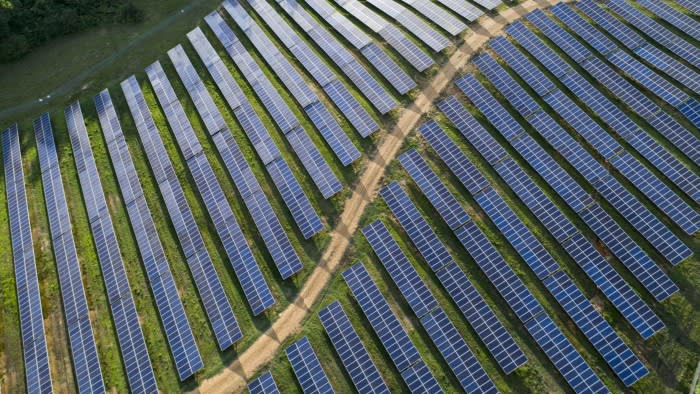Unlock the Editor’s Digest for free
Roula Khalaf, Editor of the FT, selects her favourite stories in this weekly newsletter.
Next time you turn to ChatGPT, try asking it how much energy it needs to respond to your query. The International Energy Agency reckons the answer is 2.9 watt hours (Wh), or 10 times as much as a Google search.
The excitement around AI helps explain why electricity demand from data centres is expected to take off. This extra load is a bugbear for the energy transition. But, as Microsoft’s deal to back perhaps $10bn of new renewable projects from Brookfield suggests, image-conscious tech giants are well placed to help.
The challenge is clear. Demand from data centres will roughly double by 2026, from 460TWh to as much as 1000TWh says the IEA. Worse, data processing facilities tend to converge on favourable locations. In tax-friendly Ireland, for example, they will account for more than 30 per cent of overall electricity consumption by 2026.
Delivering that is a big job, especially when utilities and grids are already stretched. Indeed, Ireland will only allow new data centres to connect to the grid if they have the ability to switch to their own supply.
The risk is that the data centre boom may spur construction of new gas-fired power plants. Dominion Energy, active in data centre-heavy Virginia, has pointed to 9GW of potential new gas-fired capacity to help with reliability. Microsoft is building a gas-fired power plant in Dublin to provide back-up power.
The upside, however, is that tech giants are rich, innovative and keen to curry favour with the general public. They are already big buyers of renewable energy, signing long-term power purchase agreements that enable developers to build new capacity. Microsoft’s deal with Brookfield — eight times the size of the previous single biggest corporate purchase — is an example.
Adding green electricity to the grid is the easy bit. Data centres need electricity all the time, while renewables are volatile. Matching consumption in every place and all the time — as Google and Microsoft have promised to do by 2030 — means getting creative.
As well as batteries, they will need to think of solutions for the occasional sunless, windless or grid-outage day, creating a market for long-duration storage.
The ideal solution, of course, would be a technology that delivers reliable clean electricity. Nuclear has not had an easy time of it in many parts of the globe. But Microsoft, for example, now has a director of nuclear technologies working on small modular reactors for its data centres.
With the tech world behind it, nuclear’s renaissance looks that much more likely.
camilla.palladino@ft.com


